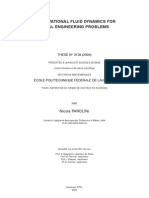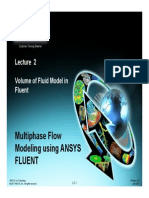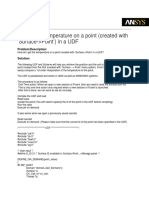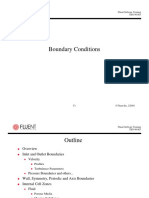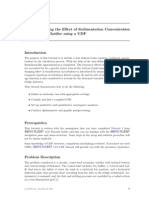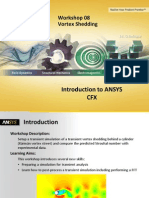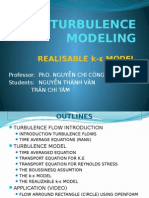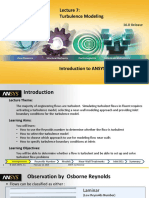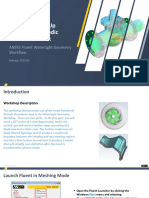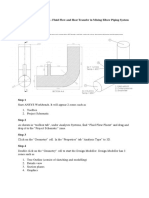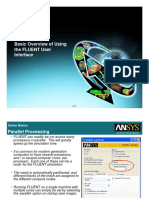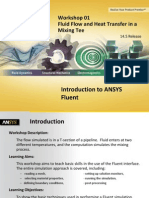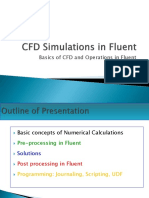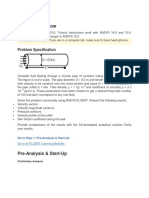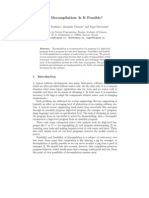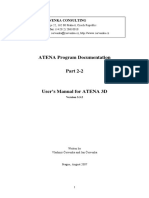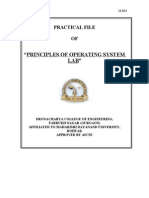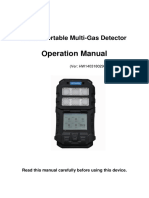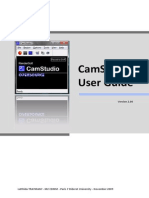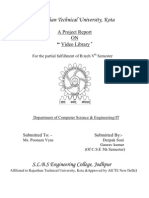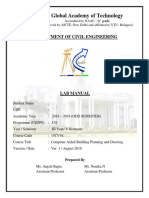Customer Training Material
Lecture 3 L t Basic Overview of Using g the FLUENT User Interface
Introduction to ANSYS FLUENT
ANSYS, Inc. Proprietary 2010 ANSYS, Inc. All rights reserved. Release 13.0 December 2010
L3-1
�Solver Basics
Parallel Processing
FLUENT can readily be run across many processors in parallel. This will greatly speed up the simulation time. It is common for modern generation computers to have several processors, and / or several compute cores per processor. Each one of these can be a node for the FLUENT simulation. node simulation The mesh is automatically partitioned, and different blocks of the mesh are assigned to the different compute nodes. nodes Running FLUENT on a single machine with multiple cores can simply be set by selecting the parallel option on startup (see image). parallel image) Alternatively a distributed parallel cluster can be set up, and the simulation run across many* machines simultaneously * FLUENT scales well, and simulations using
several hundred nodes are not unheard of.
ANSYS, Inc. Proprietary 2010 ANSYS, Inc. All rights reserved.
Customer Training Material
L3-2
Release 13.0 December 2010
�Solver Basics
FLUENT 13 GUI Navigation
Customer Training Material
The FLUENT GUI is arranged such that the tasks are generally arranged from top to bottom in the project setup tree. Selecting an item in the tree opens the relevant input items in the center pane.
General Models Materials Boundary y Conditions Solver Settings Initialization and Calculation Postprocessing
ANSYS, Inc. Proprietary 2010 ANSYS, Inc. All rights reserved.
L3-3
Release 13.0 December 2010
�Solver Basics
Mouse Functionality
Customer Training Material
Mouse button functionality depends on the chosen solver (2D / 3D) and can be configured in the solver. Display Mouse Buttons Default settings
2D S l Solver
Left button translates/pans (dolly) Middle button zooms g p Right button selects/probes
3D Solver
Left button rotates about 2 axes Middle button zooms
Middle click on point in screen centers point in window
Right button selects/probes
Retrieve detailed flow field information at point with Probe enabled.
Right-click on the graphics display.
U User can choose b h between classic FLUENT settings, or f mouse l i i for behaviour consistent with Workbench.
ANSYS, Inc. Proprietary 2010 ANSYS, Inc. All rights reserved.
L3-4
Release 13.0 December 2010
�Solver Basics
Text User Interface
Most GUI commands have a corresponding TUI command.
Customer Training Material
Press the Enter key to display the command set at the current level. q moves up one level. S Some advanced d d commands are only available through the TUI.
The TUI offers many very valuable benefits:
Journal (text) files can TUI Window be constructed to automate repetitive tasks. tasks FLUENT can be run in batch mode, with TUI journal scripts set to automate the loading th l di / modification / solver execution and postprocessing. difi ti l ti d t i Very complex models can be set using a spreadsheet to generate the TUI commands.
ANSYS, Inc. Proprietary 2010 ANSYS, Inc. All rights reserved.
L3-5
Release 13.0 December 2010
�Solver Basics
Sample FLUENT Journal
Customer Training Material
A journal file is a text file which contains TUI commands which FLUENT will execute sequentially. Note that the FLUENT TUI accepts abbreviations of the commands for example, p p
rcd wcd Reads case and data files Writes case and data files
Sample Journal File
; Read case file rc example.cas.gz ; Initialize the solution /solve/initialize/initialize-flow ; Calculate 50 iterations it 50 ; Write data file wd example50.dat.gz ; Calculate another 50 iterations it 50 ; Write another data file wd example100.dat.gz ; Exit FLUENT exit it yes
ANSYS, Inc. Proprietary 2010 ANSYS, Inc. All rights reserved.
L3-6
Release 13.0 December 2010
�Solver Basics
Scaling the Mesh and Selecting Units
When FLUENT reads a mesh file (.msh), all dimensions are assumed to be in units of meters.
If your model was not built in meters, meters then it must be scaled. scaled Always verify that the domain extents are correct.
Customer Training Material
When importing a mesh under Workbench, the mesh does not need to be scaled; however, the units are set to the default MKS y system. Any mixed units system can be used if desired.
By default, FLUENT uses the SI system of units (specifically, MKS system). Any units can be specified in the Set Units panel, accessed from the top menu menu.
ANSYS, Inc. Proprietary 2010 ANSYS, Inc. All rights reserved.
L3-7
Release 13.0 December 2010
�Solver Basics
Polyhedral Mesh Conversion
A tetrahedral or hybrid grid can be converted to polyhedra in the FLUENT GUI (not in the preprocessor).
Generate a tetrahedral mesh then convert inside FLUENT. FLUENT Advantages
Improved mesh quality. Can reduce cell count significantly. User has control of the conversion process. p
Customer Training Material
Tet/Hybrid Mesh
Disadvantages:
Cannot be adapted or converted again. Cannot use tools such as smooth, swap, merge and extrude to modify the mesh.
Two conversion options are available in the Mesh menu:
Mesh > Polyhedra > Convert Domain Convert all cells in the domain (except hex cells) to polyhedra
Cannot convert adaped meshes with hanging nodes
Polyhedral Mesh
Convert only highly skewed cells to polyhedra Mesh > Polyhedra > Convert Skewed Cells
ANSYS, Inc. Proprietary 2010 ANSYS, Inc. All rights reserved.
L3-8
Release 13.0 December 2010
�Solver Basics
Material Properties
Customer Training Material
Material properties need to be defined for all fluids and solids to be simulated The parameters asked for will depend on the models selected for the simulation Many common materials are already defined in the FLUENT Database and can easily be copied over to the model Note that these y values may be either:
Constants Functions of temperature Other built in functions following common relationships Defined by the user in a UDF.
ANSYS, Inc. Proprietary 2010 ANSYS, Inc. All rights reserved.
L3-9
Release 13.0 December 2010
�Solver Basics
Operating Conditions
The Operating Pressure with a Reference Pressure Location sets the reference value that is used in computing gauge pressures. The Operating Temperature sets the reference temperature (used when computing buoyancy forces). Specified Operating y Density sets the reference value for flows with widely varying density.
Customer Training Material
ANSYS, Inc. Proprietary 2010 ANSYS, Inc. All rights reserved.
L3-10
Release 13.0 December 2010
�Solver Basics
Computing the Solution
The remaining steps are covered in the subsequent lectures (and the practical workshops)
Customer Training Material
Setting Boundary conditions (all outer boundaries to the fluid must be prescribed - for example velocity inlet / pressure outlet / symmetry / wall) Solver Settings (optimising settings for speed, accuracy and stability) I iti li ti Initialisation (initial l (i iti l values f th fl fi ld) for the flowfield)
Solving the problem, and checking for convergence Postprocessing the results.
ANSYS, Inc. Proprietary 2010 ANSYS, Inc. All rights reserved.
L3-11
Release 13.0 December 2010
�Appendix : Additional notes
ANSYS, Inc. Proprietary 2009 ANSYS, Inc. All rights reserved.
3-12
April 28, 2009 Inventory #002600
�Solver Basics
Mesh Information and Hierarchy
All mesh information is stored in the mesh file.
Node coordinates Connectivity Zone definition
Customer Training Material
Cell Center
Node
Similar to the way geometry is defined, mesh entities obey a hierarchy:
Node Edge Face Cell Z Zone Edge intersection / grid point Boundary of a face (defined by two nodes t d The boundaries of cells, defined by a collection of edges The control volumes into which the domain is discretized. A collection of nodes, edges, f ll ti f d d faces or cells.
Cell Face Boundary Face Cell
Simple 2D Mesh
The computational domain is defined by all members of the hierarchy
For fluid flow simulation only, the domain consists only y y of the fluid region. For conjugate heat transfer or fluid-structure interaction problems, the domain needs to include any solid parts that are present.
Node Boundary Face Edge Cell
Simple 3D mesh
Release 13.0 December 2010
Boundary data is assigned to face zones. Material data and source terms are assigned to cell zones.
ANSYS, Inc. Proprietary 2010 ANSYS, Inc. All rights reserved.
L3-13
�Solver Basics
Reordering and Modifying the Grid
Customer Training Material
The grid can be reordered so that neighboring cells are near each other in the zones and in memory
Improves efficiency of memory access and reduces the bandwidth of the computation Reordering can be performed for the entire domain or specific cell zones.
Mesh > Reorder > Domain Mesh > Reorder > Zones
The bandwidth of each partition in the grid can be printed for reference.
Mesh > Reorder > Domain
The f face/cell zones can also be modified by the following operations in the / f f Grid menu:
Separation and merge of zones Fusing of cell zones with merge of duplicate faces and nodes Translate, rotate, reflect face or cell zones Extrusion of face zones to extend the domain Replace a cell zone with another or delete it Activate and Deactivate cell zones
L3-14
Release 13.0 December 2010
ANSYS, Inc. Proprietary 2010 ANSYS, Inc. All rights reserved.
�Solver Basics
Profile Data and Solution Data Interpolation
FLUENT allows interpolation of selected variable data on both face zones and cell zones by using profile files and data interpolation files, respectively.
F example, a velocity profile f For l l it fil from experimental data or previous FLUENT run at an inlet, or a solution interpolated from a coarse mesh to fine mesh.
Customer Training Material
File > Write > Profile File > Read > Profile Profile files are data files which contain point data for selected variables on particular face zones, and can be both written and read in a FLUENT session. p File > Interpolate Similarly, Interpolation data files contain discrete data for selected field variables on p particular cell zones to be written and read into FLUENT.
ANSYS, Inc. Proprietary 2010 ANSYS, Inc. All rights reserved. Release 13.0 December 2010
L3-15



